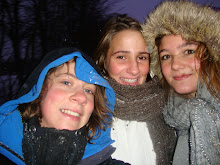
It was hard to think back of thing’s we did again about ‘Introduction to Denmark and the Danish language’ because we discussed and talked about this in the first couple of weeks of our Erasmus stay. I remember it was one of the most interesting lessons at that time. Because we were (and some still are) really curious about how is Denmark like? How are the people who live here? Is it so much different then were we come from? What habits do they have? And what could make them special?
In the lessons we learned more about Danish storytellers like Karen Blixen and Hans Christian Andersen. And it was really nice because their story was told by a video that was more interesting then when you would just discuss them by word, now we really got to see pictures and movie clips. At first you thought this is it? Aren’t there more important things to talk about but no it is like that. Karen and Hans Christian are the most famous Danish authors.
History was a bit boring to be honest, it was just always about the war and about Germany and it was really hard to find your interest in to what the teacher was saying, but he really tried to make it interesting but it wasns’t always that good.
A really cool thing he did was, he searched for pictures of all the important places or building from the different country’s were we come from and he showed them to us. and then you could react to that like ‘ O that’s in Belgium’ and you could give an explanation about it.
Learning about Danish stereotypes was interesting because we had to talk about the Danish and other cultures. We had to talk about our country, our stereotypes, … but not in a dull way we did it in a game. That was also like that with learning Danish. The teachers made up some games to make sure we learned Danish. Introducing ourselves by a talk round, ‘throwing’ number to each other, shopping for a recipe in advertising leaves, …
And much more but the most interesting was the power point in the beginning of our stay? we all had to make a power point about our home country and I still have the most memories about that.. Like the Norwegian mountains, the Czech Clock, the crazy buildings in Valencia in the video commercial, …
And did my questions get answered? Yes they have been, more then I thought they were.. because at first I thought what do I know about denkmark: hygge, smorrebrod and the jante law. Those are all stereotypes and not really knowledge about a country because you can find this information in a book. But when my family came I was really surprised of all the things I could tell them about Denmark. About their way of living and cultural habits. So yes I personally am glad with the knowledge I have about Denmark. You only realize what you know once you’ve talked about it.
(Module 1: Comparative Studies)











